 |
| Young Harry DeArmond |
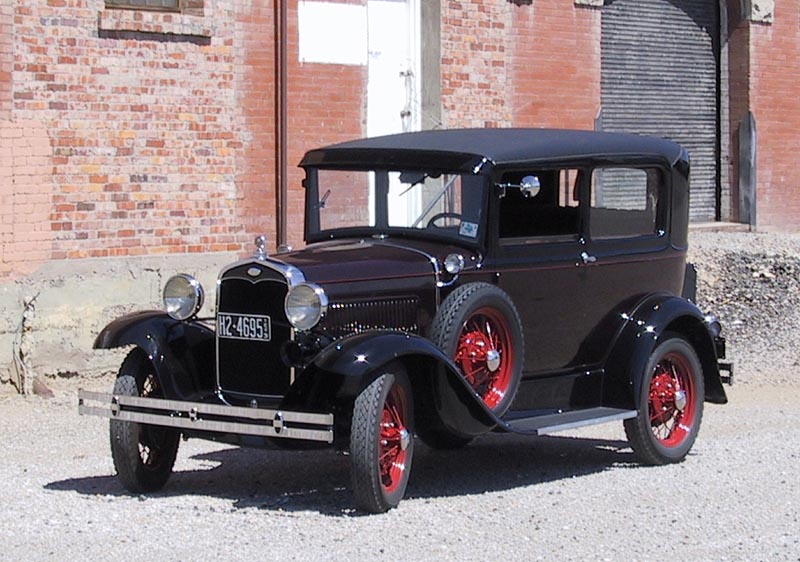 |
| Ford Model A |
John’s older brother Harold, born in 1906, who also played banjo and guitar, seized upon the design and looked for ways to profit from it. Harry DeArmond believed that offering an add-on pickup that would avoid cutting a hole in the top of a guitar, and also give depression-era players a way to go electric without buying a whole new instrument, was the way to go.
He had originally developed the attachable guitar pickup as far back as the mid-1930's. But it would be much later before he became commercially successful. Later on in life he established a relationship with Horace "Bud" Rowe and the two men opened up shop in Toledo, Ohio.
 |
| DeArmond RHC-B with volume control |
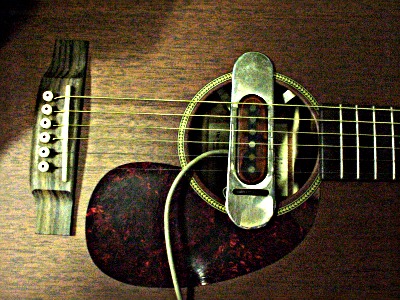 |
| RH Model |
The RH pickups fit into the guitar's sound hole and was retained with adjustable springs to minimize damage to the instrument and facilitate removal. Such notable British Invasion acts, such as Peter and Gordon used these on acoustic guitars.
The other two were designed for archtop guitars and were called the FH-B, and FHC. The latter had a volume control..
 |
| DeArmond FHC |
The rod passed through a small hole on the left side of the pickup. The rod is strategically bent to go around the bridge saddle and an assembly allowed it to clamp to the archtops guitar strings just behind the bridge. .
The pickup ingeniously slides along the length of the rod, from bridge to neck to provide a variation in tonality.
The model FHC-B was sold with a 12 foot guitar cable but no volume control, and was meant to be sold with a volume pedal.
The FHC-C has a volume control housed in a small box on the cable.
DeArmond originally called his units guitar microphones. All units were passive single coil electromagnetic pickups wound around 2 alnico pole pieces.
 |
| Guitar Mic |
DeArmond also created other versions. One was actually called The Guitar Mic.
 |
| Rhythm Chief with 6" rod |
This was accomplished by the use of 2 screws through 2 holes in the rod. The rod was attached to the upper bass side of the fretboard. This was a much more invasive installation, meant to be permanent. Both pickups used an attachment cable with a threaded female connector on one end and a 1/4" plug on the other.
Unlike today's RCA 1/4" connections these initially were called Screw-on Cables The downside of these cable was the fact that the wire between the pickup and volume control often dried out, became brittle, cracked and fell apart or became completely stiff, rigid and useless. Some of the vintage units became unusable.
The Rowe/DeArmond Company modified their design by use of replacing the 12 foot permanent cables and the threaded connectors with an 1/8" input jack on the pickup and provided a cable with a 1/8" plug on one end and a standard 1/4" plug on the other.
 |
| Rhythm Chief with pole pieces |
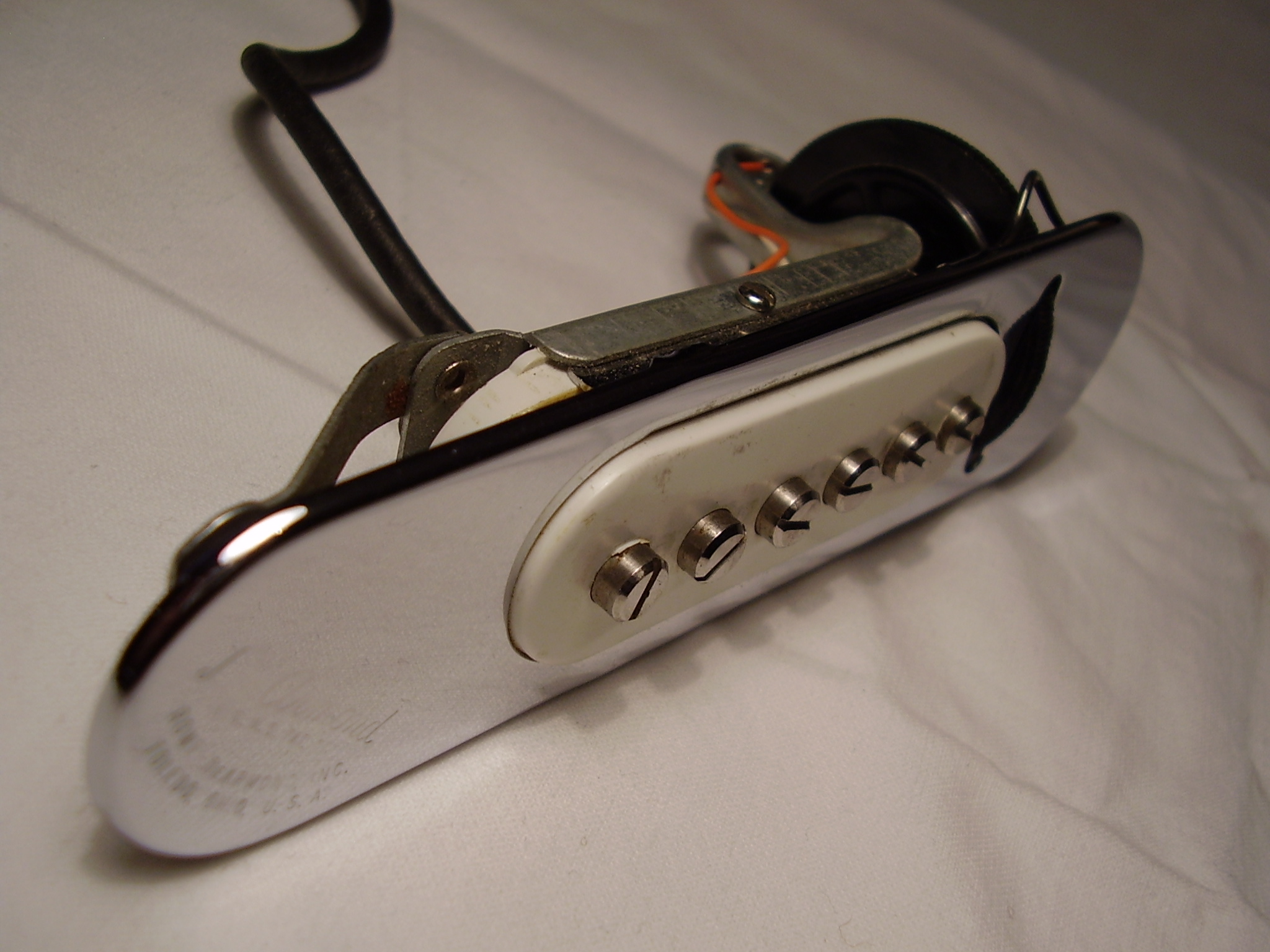 |
| Model 210 |
DeArmond did actually create Guitar Mics, which were contact microphones that could be used for guitar, classical guitar, ukulele and other instruments. I owned a couple of these back in the mid 1960's. They sold for around $10.00 USD.
The problem with them was they picked up ambient noise. You could hear every thump and pick strum. Nevertheless, Django Reinhardt had one on his Selmer guitar.
Rowe/DeArmond pickups became industry standard, perhaps because they were among the first companies to concentrate on building guitar pickups.
Therefore many guitar manufacturers utilized DeArmond pickups on their products. These included D'Angelico, Epiphone, Fender, the Italian manufacturers Eko and Galanti, Gretsch, Guild, Harmony, Hofner, Ovation, Microfrets, some Silvertone guitars.
Even Martin guitars on the Martin D-18E and D-28E models.
 |
| Tapping on guitar with DaArmond FHC |
This method was later adopted by Jimmie Webster, Gretsch's designer and endorser as he traveled across the United States giving seminars at music stores and institutions to promote Gretsch.
The DeArmond pickup became a mainstay of jazz players in the 1950s and 60s, even though DeArmond had been selling various forms of his “guitar microphone” since the mid-30s.
 |
| Guitarist Vic Flick with Essex Paragon |
Mr. Flick's Essex guitar is being auctioned this month
DeArmond went on to create some of the earliest effects units and pedals. In the early 1940's, Harry DeArmond invented the world's first effect unit for electric guitar, the Model 601 Tremolo Control.
The foot-pedal version, Model 800 Trem Trol followed. This foot-operated floor unit comprised a mains voltage motor that rocked a small sealed canister fitted with two electrical contacts and containing electrically conductive fluid.
The variable frequency of the electrical interruptions action of the mechanism created a type of tremolo effect. Bo Diddley and many other artists used this effect unit. Rowe/DeArmond went on to make many more guitar pedals and effects.
Most notable are a series of volume pedals that were used by steel guitar players. The first was the model 1600 which was a very simply designed pedal.
Later versions were improved upon, such as the model 1630 Optical Volume pedal. DeArmond offered a combination volume pedal and pre-amp, known as the model 1604.
DeArmond also invented a Pan Volume pedal which allowed a player to pan between channels or amplifiers. The model 1622 was a Stereo volume pedal.
During the late 1960's and 1970's, Rowe/DeArmond came out with a line of guitar effects based on popular models of the day, such as the Square Wave Distortion Generator and the DeArmond Wa-Wa pedal.
The DeArmond Weeper, was their version of the Dunlop Crybaby Wa-Wah pedal. DeArmond produced three versions of phase shifters including the model 1900 Pedal Phasor, the model 1920 Tornado Phase Shifter and the model 1930 Twister Phase Shifter. During the 1960's
| DeArmond R5 |
 |
| DeArmond R15 |
 |
| Martin 15 watt amp |
As you may know the Fender Musical Instrument Company went on a acquisition spree during the late 1990's through the early 2000's. One of the companies they purchased was Guild Guitars.
 |
| DeArmond X155 |
 |
| DeArmond M75T |
However the DeArmond Goldtones and DeArmond 2k single coil pickups are very nice, as are the Korean made DeArmond guitars.
The Indonesian manufactured DeArmond guitars used Asian manufactured humbucker pickups and were not of the greatest quality. I once owned the S-67 seven string model pictured in this link.
Harry DeArmond retired in 1975, by which time his company had designed and manufactured over 170 different pickups for a wide range of stringed instruments and many amplifiers and effects units.
Together with his business partner Bud Rowe, he made a major contribution to the design and development of pickups for stringed instruments and was granted several patents.

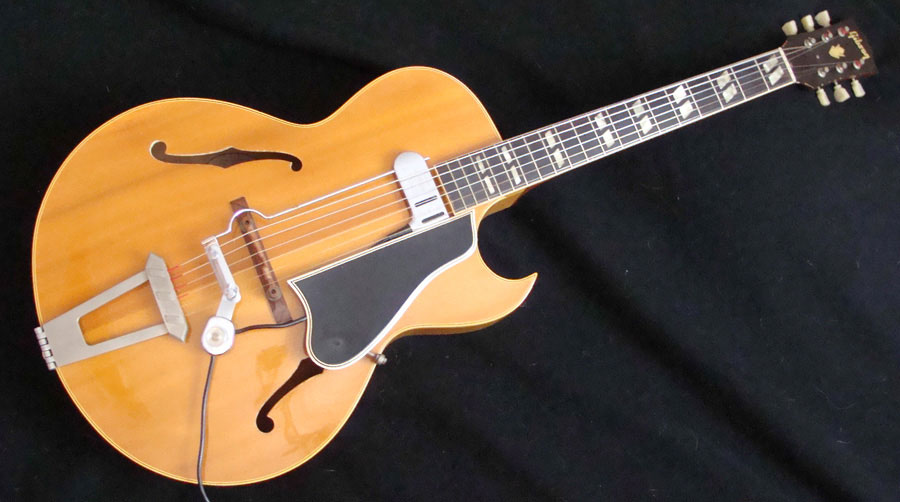
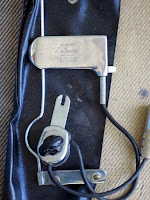








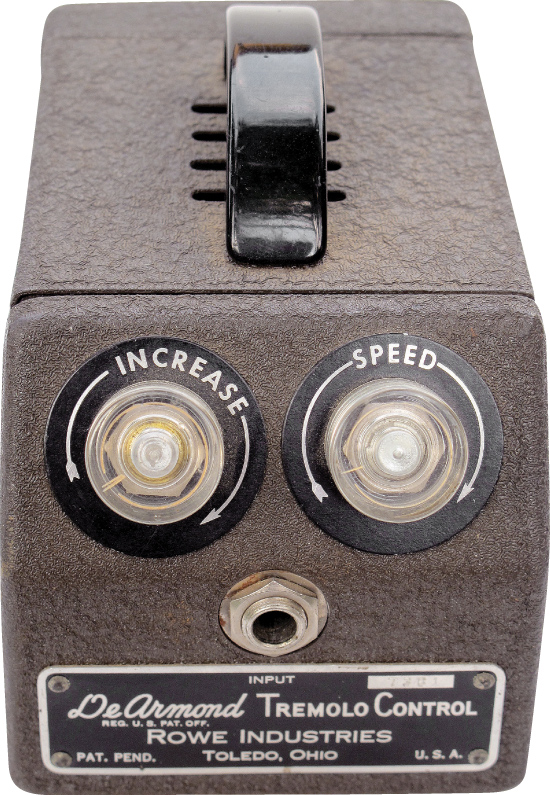







Nice Blog, thanks for Shearing this Info
BalasHapusclipping path
clipping path service
photo editing company
clipping path service provider